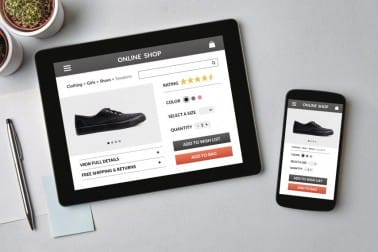Rich Product Content for Marketplaces: What it Is and Why You Need It

April 13, 2021
With so much competition online, brands and manufacturers need to make the most of the content on their product pages to rank in marketplace search pages and traditional search engines, while establishing trust with customers. A rich product content management strategy is the best way to accomplish both at once. By combining effective copy with rich media and accurate specifications, brands can create engaging product listings that result in increased visibility and sales. And when these brands are able to manage rich content effectively across different channels, that’s when the magic happens.
What is Rich Product Content?
Rich product information includes descriptions, images, and videos that are optimised to engage customers and search engines at the same time. It goes beyond simple technical specifications and feature statements to offer a better, or “richer” shopping experience. Most online marketplaces encourage the use of rich product content; some even offer enhanced content modules that give brands and manufacturers more control over the product page.
Types of Product Content
Titles and Product Descriptions
All product pages include titles and product descriptions. But there are ways to optimise these areas that can make them more powerful. For example, product titles on marketplaces should include the brand, product name, keywords, category, and use cases.
Similarly, product descriptions should be supercharged with good sales copywriting and SEO techniques. A great product page will combine romance copy designed to catch users’ attention with clear and concise product information, like bullet points that convey features and benefits to scanning shoppers. At the same time, you should use your main keyword and its related terms a handful of times in that space.
Images
Optimised images are essential for customers to know exactly what they are getting in an online product. After all, they can’t pick up the product or open the box before they buy it. Here are a few different image techniques you can use in your product content management strategy to increase trust:
- Mobile ready hero image (MRHI): This type of image is edited to show important information to shoppers using mobile screens. Think of a pack of granola bars. The number of bars, flavour, and brand will be included on the product image. This technique is useful for products offered in different sizes and variants.
- 360-degree image: A 360-degree composite image allows shoppers to view a product from every angle. This can help the product become more “tangible” to the shopper and help them understand the product’s dimensions. One eCommerce retailer, Grainger, reported a 47% increase in conversion rates for products featuring a 360-degree image.
- Inside-the-box: For products that include different pieces, it’s helpful to have an image that shows everything in the box. This can also help reduce return rates.
Along with these different types of images, you should upload optimised meta tags and captions wherever possible, including your product keywords in a natural way.
Videos
You can accomplish a lot with a short, focused video. You can assuage apprehensions by showing how to assemble a product or how to use certain features. Videos can also help customers get a better idea of a product’s size and applications to know if it’s what they need. Plus, they can highlight features that aren’t readily noticeable in pictures, show users how a product works, and give use case examples. All of this helps to increase your conversion rate as well. According to Animoto, 73% of shoppers are more likely to make a purchase after seeing a product video.
Technical Specifications
Having current and complete technical specifications is important for every product you sell. While the many spec requirements for a laptop or hand tool are widely available, many vendors fail to include adequate specifications for other items, from clothing to home décor, to furniture. After all, we’ve all seen the online shopping “fails” where disappointed customers show off products that didn’t match their expectations.
Some marketplaces have both mandatory and “optional” specification fields. You’ll need to ensure you have all mandatory fields filled out appropriately—but don’t discount the optional ones! Many of these can help boost your searchability and the salability of your goods. For instance, product tags could help a fashion company sell cardigans by listing them as both “cardigans” and “sweaters” for searching shoppers.
Marketplaces can also populate comparison charts between similar products, and it’s not good to have any blank spaces when shoppers are looking at your competitors. Most of these populate automatically based on the information in your product description, so your copy needs to be complete according to each retailer’s or marketplaces mandates.
Reviews
Many people check reviews before purchasing a product. One study found that the conversion rate for a product with just five reviews improves by 270% over a product with zero reviews. That means you should prioritise collecting reviews for new products right away. Another benefit of reviews is that they enhance the SEO of your product page. Review content is unique and relevant, and that means search engines will have more ideas and phrases to index around your product.
Enhanced Brand Content on Marketplaces
Some online marketplaces allow brands to upload richer content beyond standard product descriptions. Amazon does this through its Enhanced Brand Content program, also known as A+ Content, and Walmart.com has a Rich Media program. Depending on the program, brands may need to pay a fee or receive an invitation.
Enhanced content allows brands to add a visual landing page below the fold on a product page. Elements can include shoppable carousels, comparisons between brand products, videos, enhanced FAQs, and charts. Since these elements are customisable, brands can make their product pages feel more like their main websites. Investing in enhanced content can be a great way to elevate a product page and capture more conversions.
Share this post:
Stay ahead of the competition
Get expert supply chain insights delivered directly to your inbox weekly.